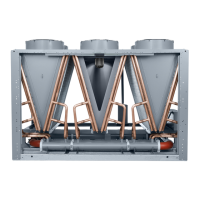
Do you have a question about the Carrier AquaForce B Series and is the answer not in the manual?
Explains conventions used in the manual for clarity and consistency.
Lists and defines abbreviations used throughout the manual for technical terms.
Describes the HMI and core control system functions.
Details the display interface, including welcome and home screens.
Explains how to configure operating conditions and equipment arrangements.
Lists configuration tables that control chiller operation by user access level.
Lists essential checks before starting the chiller, including auxiliary components and wiring.
Provides step-by-step instructions for start-up under qualified technician supervision.
Details the step-by-step process for starting the chiller and its components.
Describes the ABV's function, installation, and manual operation.
Explains the master/slave control sequence for dual chiller applications.
Lists thermistors for chiller operation and their resistance values.
Describes the location and function of the LWT thermistor.
Details the location and function of the EWT thermistor.
Explains the location and function of the SGT thermistor for each circuit.
Describes the location and function of the DGT thermistor for each circuit.
Details the location and function of the LIQT thermistor for each circuit.
Explains the location and function of the ECT thermistor for each circuit.
Describes the location and function of the compressor motor temperature thermistors.
Details the location and function of the OAT sensor.
Explains the function of the space temperature sensor and its connection.
Lists the types of pressure transducers used and their functions.
Describes the components and function of the economizer assembly.
Explains the function, operation, and control logic of the electronic expansion valve (EXV).
Details how the main EXV is controlled, including overrides and set points.
Provides steps for troubleshooting EXV issues, including physical operation and replacement.
Instructions for reinstalling the EXV motor assembly.
Explains how to interpret the moisture indicator and when to replace the filter drier.
Provides guidance on replacing filter driers when moisture is detected.
Outlines recommended maintenance tasks for the unit, categorized by frequency.
Explains how the control system monitors and generates warnings for abnormal conditions.
Describes how to access and view current alarms on the Carrier Controller display.
Details the procedure for resetting active alarms, distinguishing automatic and manual resets.
Explains where information regarding resolved alarms is stored and how to access it.
Provides a list of main menu options with associated tables for display and navigation.
Details general parameters, their CCN names, ranges, default values, and read/write access.
Lists temperature-related parameters, their CCN names, ranges, and read/write access.
Details pressure-related parameters, their CCN names, ranges, and read/write access.
Lists input status parameters, their CCN names, ranges, and read/write access.
Lists output status parameters, their CCN names, ranges, and read/write access.
Describes the various operating modes of the chiller and their associated parameters.
Lists setpoint parameters, their CCN names, ranges, and default values.
Outlines the structure of the configuration menu, with associated tables for various settings.
Details the Human Machine Interface configuration options, including network settings.
Provides network connection parameters for Ethernet port eth0, including IP and DNS settings.
Details network connection parameters for Ethernet port eth1, including IP and DNS settings.
Lists parameters for configuring Carrier Comfort Network (CCN) communication, including address and baud rate.
Specifies BACnet standard configuration parameters, including device identification and network settings.
Explains how to configure date, time, and daylight savings settings, including network time synchronization.
Provides information about device description, location, software part number, and serial number.
Lists CPU memory usage, total memory, and free memory.
Details termination resistor settings for communication bus connectors.
Lists system information such as SDK version, UI version, and OS build.
Allows adjustment of the display brightness.
Describes how to change user passwords for different access levels.
Lists general configuration parameters like priority sequence, ramp loading, and demand limit settings.
Details pump configuration parameters, including sequence, rotation delay, and flow check.
Lists parameters related to reset configurations, including cooling reset and temperature settings.
Lists parameters for quick tests on unit components to verify operation.






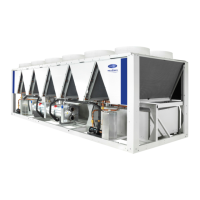

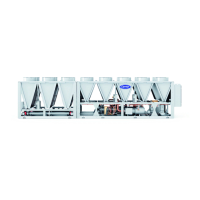

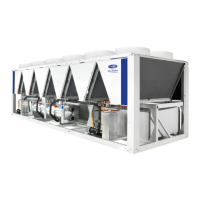
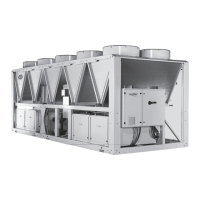
